 0
Product
Products
(empty)
0
Product
Products
(empty)
No products
Pet & Garden Supplies
- Poultry
-
Bird
- Birds For Sale
- Bird Seed & Grains
- Feeds, Treats & Supplements
- Lorikeet Food
- Breeding Aids
- Bird Cages
- Bird Medications
- Bird Care Supplies
- Pigeon
-
Dog
- Dog Treats
- Dog Food
- Dog Kennels
- Crates, Carriers & Pens.
- Dog Medication & Supplements
- Flea, Tick and Worming
- Shampoo & Grooming
- Puppy Care
- Dog Accessories
- Cat
- Rabbit & Small Animal
- Aquarium & Reptile
- Wildlife
- Horse, Stockfeed & Hay
- Pest Control
- Wire Mesh
- Organic Gardening
- Potting Mix & Mulch
- Manure, Compost & Fertiliser
- Lawn Care
- Garden Pest Control
- Fruit & Vegie Patch Care
- Orchid Care
- Home & Garden Care
- MISC Payments
Specials
Lucerne Pellets




 0 Review(s)
0 Review(s)




 0 Review(s)
0 Review(s)
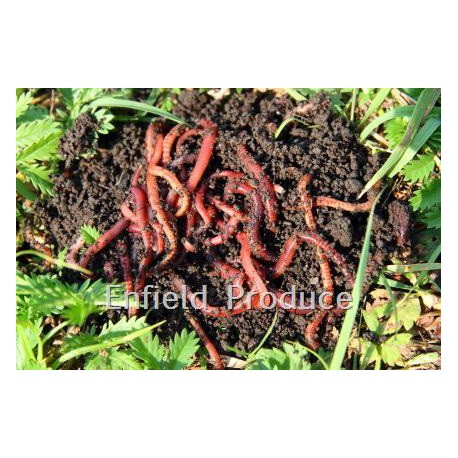 View larger
View larger
$15.00
Compost Worms (Various Tub Sizes)
Compost Worms eat our food waste. 1000 worms in a worm farm will eat around 125 grams of food waste per day producing valuable liquid, castings and baby worms for your garden.
This product is currently out of stock
Compost Worms For Worm Farm Kits and other uses.
Compost Worms eat our food waste – 1000 worms in a worm farm will eat around 125 grams of food waste per day producing valuable liquid, castings and baby worms for your garden. Over time the population will increase and depending on the size of your worm farm eat more and produce more. Typical domestic worm farms like the Worm Cafe are capable of producing around 2 litres of (10:1 diluted) liquid per week, 30-40kgs of castings per year and thousands of baby worms. Great care is taken to pack our worms in damp coconut fibre in polycarbonate woven bags for good airflow within a waxed box for safe delivery.
DISCLAIMER: There are no refunds for worms that die in transit. While it's rare that this happens, the likelihood does increase during hot summer periods (Dec to Feb). Outside these months the risk becomes very low to almost non-existent. Please consider selecting the quickest freight option like Sydney Direct or Aus Post Express during hot summer periods. Since COVID Aus Post Express has been much less reliable so you may want to consider Toll Ipec instead. Toll Ipec may be a better option for interstate but please check transit times first and only select if it's 1 or 2 days to your area at the most. The lead-up to Christmas and other holidays are especially high risk and can lead to delays and it's best not to order leading up to such holidays.
We do not guarantee how many worms are in each container. We have no way of counting them and simply sell them as we receive them from the supplier. Listed amounts are just rough estimates and NOT guaranteed.
About Compost Worms:
Compost worms are tireless in converting organic (food and garden) waste into worm castings (manure) which is a complete organic fertiliser for plants. Charles Darwin first demonstrated how worm castings rejuvenate and enrich the soil. His experiment with potatoes showed their roots growing directly towards the castings, searching for their fine balance of nutrients. There are three main species of compost worms also known as earthworms – Reds (eg, lumbricusrubellus) and the striped Tigers (eg, eiseniafoetida) are European imports now common in Australia, but there are over 300 native varieties including Blues (eg, Octolasion cyaneum).
The average length of composting worms is from 50 – 150mm. Worm farming at home, work, school and in the community will help reduce pollution through landfilling. Around 5% of global greenhouse gases are caused by organics in landfills; worm farming and composting can stop this pollution and return the benefits to the soil.
Worms in worm farms like to eat most fruit and vegetable scraps but need them cut into small pieces, as they eat by sucking. Acidic foods like citrus, onion and dairy should only be used sparingly with lime or dolomite added to balance the pH. Worm farms generally produce - liquid, castings and baby worms all of which make healthy additions to your garden. Compost worms can also be used as food for other animals like birds and fish, including use as bait.
During autumn and spring and given optimum conditions, compost worms breed rapidly and may lay a capsule (cocoon) weekly. Each capsule contains between 2 and 20 baby worms which hatch in under three weeks and reach maturity in three months.
Worms are hermaphrodites (both male and female); they mate and each worm becomes pregnant at the saddle (clitellum – the lighter coloured section around 20mm below the head). To breed successfully your worm farm should be kept damp, cool, quiet and dark.
Frequently Asked Questions:
Q. How many compost worms should I buy for a new worm farm kit?
A. The manufacturer of the worms farms recommends starting a new worm farm with at least 1000 compost worms or more ideally. However, the worms will multiply and increase in number naturally over time. We would suggest that if you have a lot of scraps to break down from the very beginning its best to get 1000 to 2000 compost worms but if you don't have much or are willing to wait for a few months to build the worm population then you could get the 500 worm pack instead.
Q. What type or variety of compost worms do you sell?
A. Generally, they are Reds and Red Tigers. They are a mixture of compost worms but mainly they are of those 2 species.
Q. I remember seeing a 150 pack of compost worms, do you still stock this size pack?
A. Our 70 worm tubs are exactly the same as the former 150 packs. We changed the name to 70 after getting some complaints by some that the packs had less than the 150 worms per tubs. Compost worms can be difficult to find and count in dirt, hence we believe most customers are misjudging how many worms they are receiving. Nevertheless, to help people overcome this perception we have re-named the pack a 70 pack even though the manufacturer still sells them as a pack of 150 worms.
Q. I have recently bought a worm farm and have discovered that red wrigglers or tiger worms are best used rather than my usual compost worms. Is this true? And do you have these worms available?
A. We got this reply from our supplier: "The worms we most usually sell are the red wrigglers, red tigers or red worms as they are commonly known - species eisenis. These are generally the best to use in worm farms as they normally live in the topsoil. As to another species that is referred to - well it depends on which species the customer is talking about. The only species of native worms that normally live in topsoil are Spenceralia aka Aussie Blues or Indian Blues also known as Excavatus. They tend to be outcompeted by the reds but can cohabit with them. So it all depends on what they are referring to"
Q. Have these compost worms been exposed to any sort of fertilizer or pesticides?
A. After asking the manufacturer I got the following answer.
Worm Farming FAQs From Manufacturer.
Worm Farming is a fun way to turn your organic waste into rich fertiliser for your garden. And, while it's easy to do, the more you know about worms and worm farming, the more fertiliser you can produce.
Can I use any worms in my Tumbleweed worm farm?
There are many varieties of worms but the ones used in worm farms are called compost worms or more specifically "reds" "blues" and "tigers". These worms have a hearty appetite and they breed quickly – which is important because you want your kitchen scraps to be eaten as quickly as possible.
How do I achieve the best environment for my worms?
Your worms will produce the richest worm farm tea if they are kept in dark, warm, moist and aerated conditions. Of course, they should also be fed regularly.
Add organic waste to the top working tray of your worm farm and place a Tumbleweed Worm Blanket on top. Spray the blanket each time you ‘feed’ the worms to keep the blanket moist. Ensure you keep the lid clipped in place to keep light and vermin out of your worm farm.
You can sprinkle lime, wood ash or dolomite on your worm farm every few weeks. Alternatively, use Tumbleweed Worm Farm and Compost Conditioner, as directed, to maintain optimum PH levels.
How do I keep vermin out of my worm farm?
Keep the lid closed on your worm farm to encourage your worms to eat and reduce the likelihood of insects and vermin entering the farm.
How do I start my worm farm?
Place the packaging of your worm farm in the base of your first working tray, cover with the coir from the worm bedding block supplied with your worm farm (follow the instructions on the back of the block).
Add at least 1000 (250grams) worms to the bedding material and cover it with a Tumbleweed Worm Blanket.
Allow your worms a few days to settle into their new home then add a handful of food scraps to the surface area and replace the Tumbleweed Worm Blanket and the lid.
Place your worm farm in a cool dry area away from the hot sun.
How many worms do I need in my worm farm?
Tumbleweed recommends that you start off with at least 1,000 worms. To ensure your worms are fresh, purchase them from a reliable source, such as a local worm farmer or reputable hardware store. Never purchase them in small plastic "take-away" containers as the worms are deprived of food and oxygen and will quickly die. When you buy your worms check that they come with an adequate amount of bedding mix or castings.
How much water should I add to my worm farm?
The content in your worm farm should feel like a damp sponge. If it is too dry, a spray of water on each layer should provide the moisture needed to keep worms in a stable environment. If your worm farm collects rain, your worms could drown. Move it into a more sheltered position and add shredded newspaper to absorb excess water.
Should I be concerned about insects living in my worm farm?
Your worm farm is home to many different organisms. They all live in harmony and are part of the breakdown process. These other creatures will probably bother you more than your worms. So, as long as your worms appear to be eating their food, don’t worry about other ‘guests’.
That said, if other organisms begin to develop in plague proportions, your worm farm may need help. Check the moisture level- it should be like a damp sponge. If it is too wet add shredded newspaper to absorb excess water. If the working tray has become too dry, spray the contents with water.
Check what kind of food is being added. If you’ve added too much acidic food, you may need to add some Tumbleweed Composting and Worm Farm Conditioner to re-balance the pH level.
The presence of vinegar flies is harmless but may indicate that too much food is being added for the number of worms in the farm. This can often occur in the early stages of your worm farm before they’ve had a chance to breed.
If ants become a problem a proprietary ant killer can be put down in the path of the ants, or the legs of your worm farm can be placed in small containers of water.
What can I feed my worms?
Your compost worms will eat both raw and cooked food and vegetable scraps from your kitchen. Coffee grinds, tea bags, dust from vacuum cleaners and soaked egg cartons can all be added. DO NOT add meat, dairy products or bread as these can attract vermin. While many experts advise not to add onions, citrus peel or tomatoes as these are very acidic, small amounts can be added as long as they are well mixed in with other food.
What do I do when the working tray is full?
When the top working tray is full (which takes about 4-6 months), take the bottom working tray and empty the contents onto your garden then return it to the top of the worm farm.
Where should I set up my worm farm?
Make it as easy as possible to add your scraps to your worm farm by setting it up close to the kitchen. Choose a shady place, away from hot sun, for your worm farm. It can sit on your balcony, down the side of your house, in the garage – or even inside your home.
Why isn’t my worm farm producing many castings?
Worms do not produce large quantities of castings (or warm poo). This is because of their diet. Fruit and vegetables are more than 90% water and so the liquid waste from worm farms is produced in much greater quantities than solid waste or worm castings. You may find it takes more than a year before you need to empty the working box. However, it is quite possible to harvest small quantities of castings to use in potting mix or seed raising mix at any time.




 (0)
(0)




 (0)
(0)




 (0)
(0)




 (0)
(0)




 (0)
(0)
This will only calculate shipping on items that are currently in your cart
Related Products
-
Compost Worms 1000 pack




 0 Review(s)
0 Review(s)
Compost Worms eat our food waste. 1000 worms in a worm farm will eat around 125 grams of food waste per day producing valuable liquid, castings and baby worms for your garden.
$56.00For Sale -
Can O Worms Worm Farm Compost Kit




 0 Review(s)
0 Review(s)
Can-O-Worms Worm Farms are a can of fun and easy for kids of all ages. It’s the world’s best selling worm farm. Everything you need to get your kids excited about composting and recycling. Unique flow-through ventilation and prevents collected tea from turning anaerobic.
$79.95For Sale -
Worm Cafe Worm Farm Compost Kit




 0 Review(s)
0 Review(s)
The worm cafe is the ultimate worm farm for indoor or outdoor use. With a sleek new design and clever features, turns organic waste into rich worm castings and worm tea with no mess. Hinged lid helps you open and fill your worm farm while a sloping base on the collector tray assists the worm tea to drain easily.
$95.00For Sale -
Tumbleweed Worm Farm Blanket - RECTANGULAR SIZE




 0 Review(s)
0 Review(s)
Suits Worm Cafe or Worm Factory! Tumbleweed Rectangular Worm Farm Blankets are designed to encourage efficient worm farming by creating the dark, moist, aerated environment that compost worms thrive in. Made from breathable 100% natural fibres in the ideal thickness to retain moisture. Stitched in handle for easy use.
$10.90For Sale -
Pisces Super Mealworms(Live)




 0 Review(s)
0 Review(s)
Superworms are extra large mealworms. They provide a natural insect food and are an ideal source of protein for medium to large birds, robins, wagtails and most reptiles. SEE DISCLAIMER BEFORE ORDERING
$16.00For Sale -
Worm Farm and Compost Conditioner 850g




 0 Review(s)
0 Review(s)
Tumbleweed Worm Farm and Compost Conditioner helps neutralise acidity and balance the pH levels in your worm farm or compost bin. This means your worms can digest larger quantities of food waste faster. Helps soil bacteria preserve essential nutrients and increases the availability of nutrients for plants. It also helps reduce odours and pest...
$12.00For Sale -
Coir Peat Brick (Unwrapped) 8L (DISC)




 0 Review(s)
0 Review(s)
The bricks are between 750 and 800 grams each and they make around 8 litres once soaked in water and broken up.





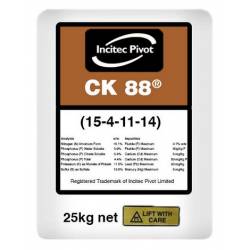
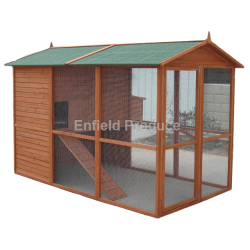
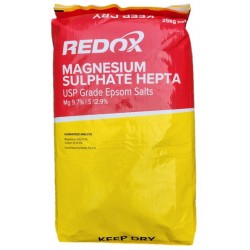
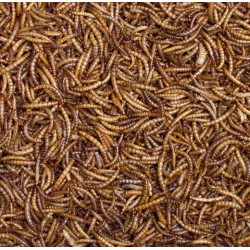
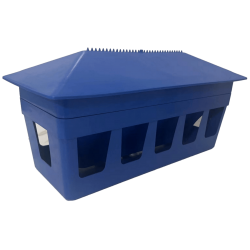
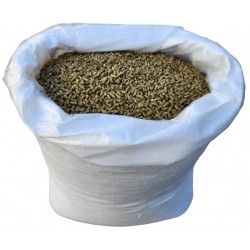
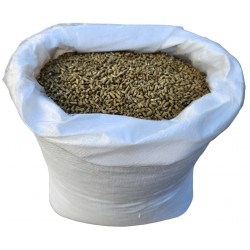




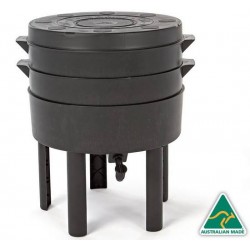
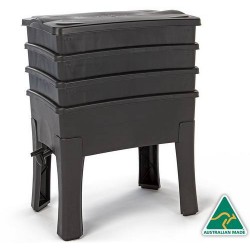
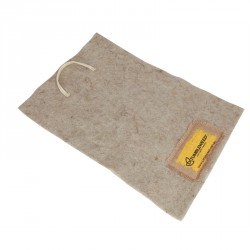
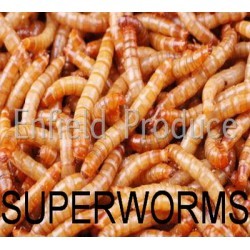
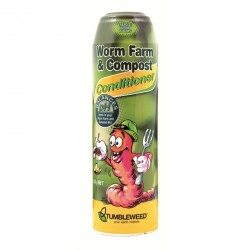
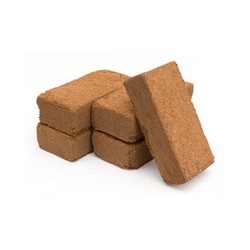
This product page has been replaced with a product below. See Below!